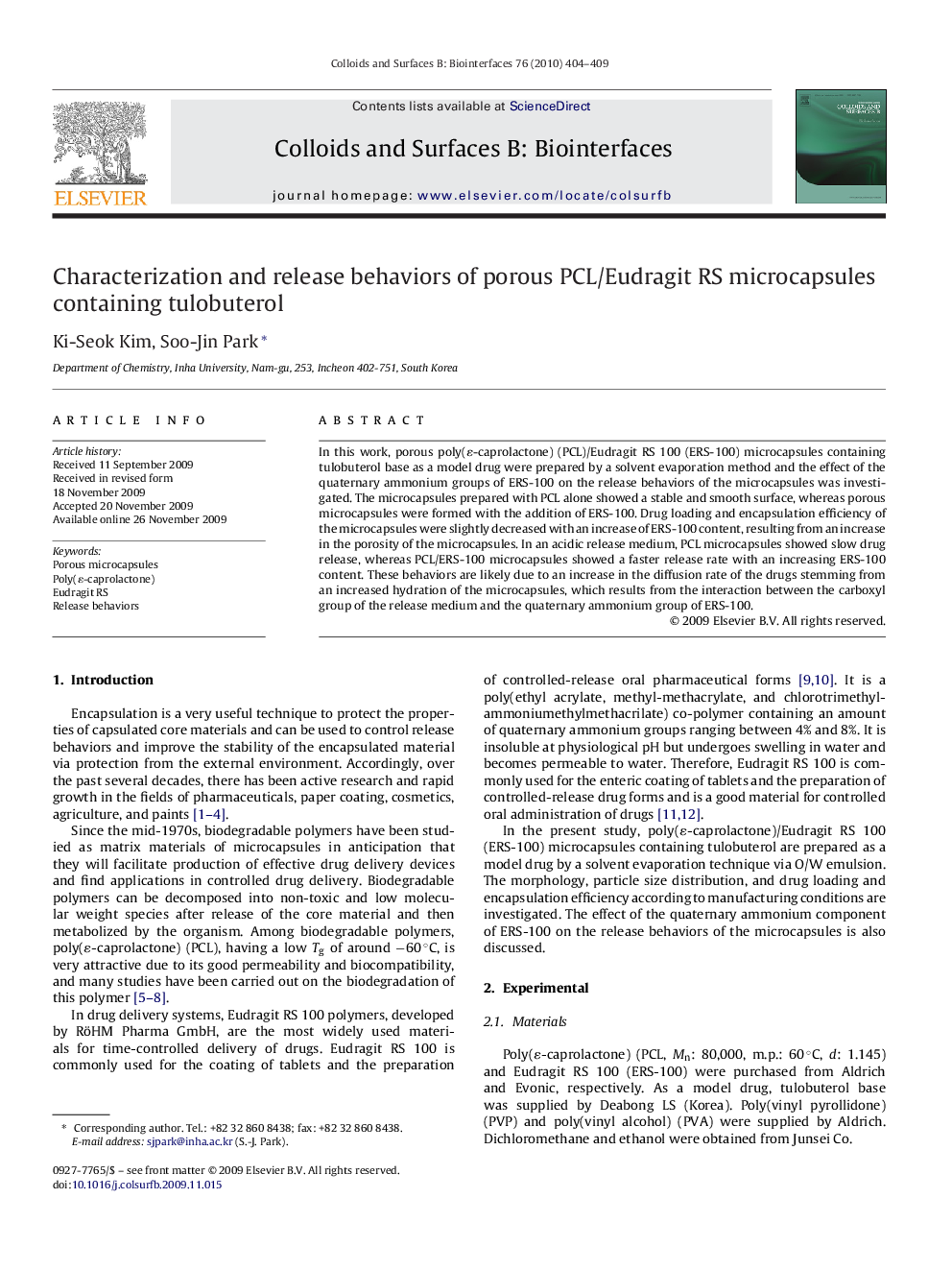| Article ID | Journal | Published Year | Pages | File Type |
|---|---|---|---|---|
| 601859 | Colloids and Surfaces B: Biointerfaces | 2010 | 6 Pages |
In this work, porous poly(ɛ-caprolactone) (PCL)/Eudragit RS 100 (ERS-100) microcapsules containing tulobuterol base as a model drug were prepared by a solvent evaporation method and the effect of the quaternary ammonium groups of ERS-100 on the release behaviors of the microcapsules was investigated. The microcapsules prepared with PCL alone showed a stable and smooth surface, whereas porous microcapsules were formed with the addition of ERS-100. Drug loading and encapsulation efficiency of the microcapsules were slightly decreased with an increase of ERS-100 content, resulting from an increase in the porosity of the microcapsules. In an acidic release medium, PCL microcapsules showed slow drug release, whereas PCL/ERS-100 microcapsules showed a faster release rate with an increasing ERS-100 content. These behaviors are likely due to an increase in the diffusion rate of the drugs stemming from an increased hydration of the microcapsules, which results from the interaction between the carboxyl group of the release medium and the quaternary ammonium group of ERS-100.
